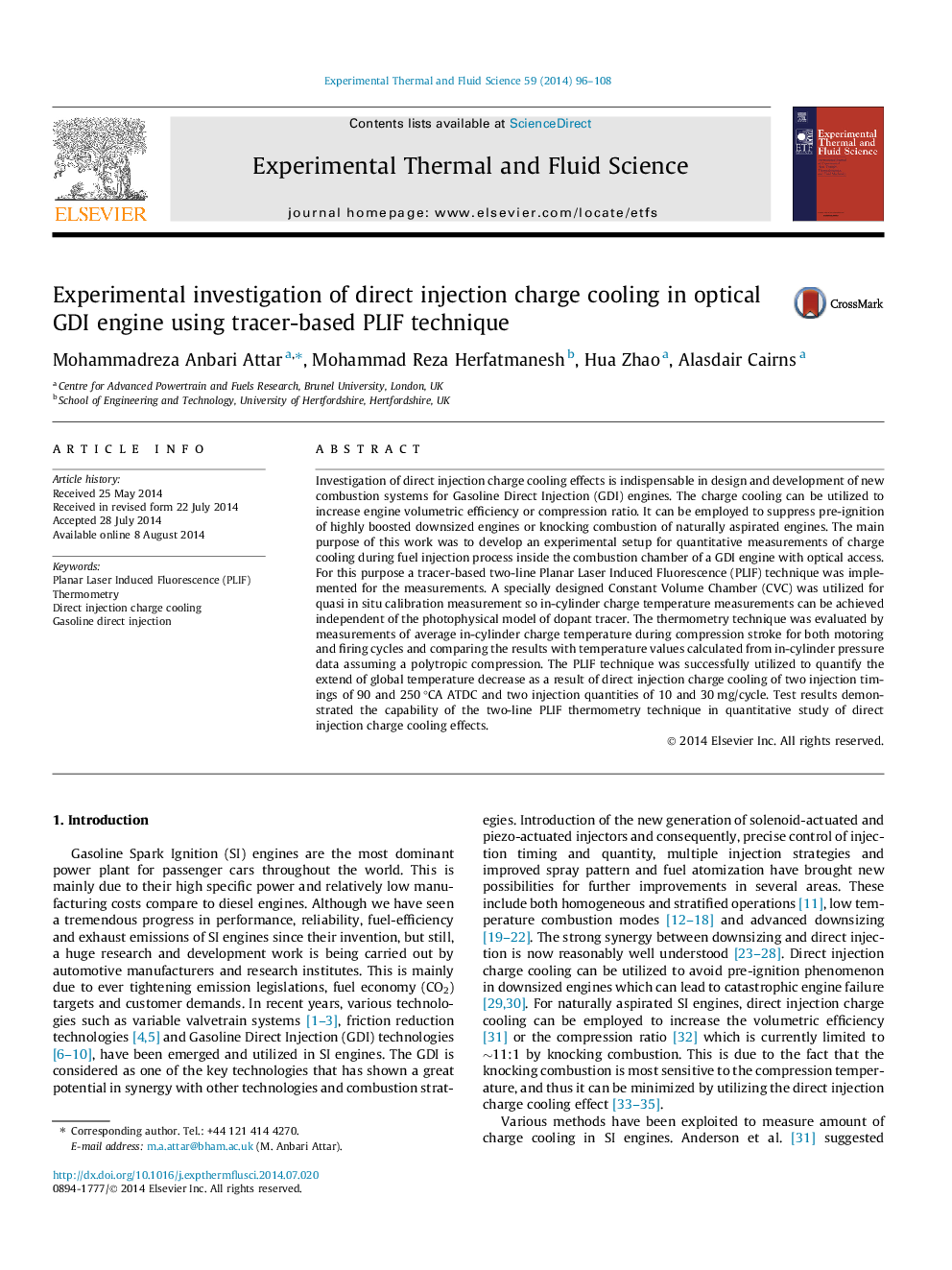| Article ID | Journal | Published Year | Pages | File Type |
|---|---|---|---|---|
| 7052490 | Experimental Thermal and Fluid Science | 2014 | 13 Pages |
Abstract
Investigation of direct injection charge cooling effects is indispensable in design and development of new combustion systems for Gasoline Direct Injection (GDI) engines. The charge cooling can be utilized to increase engine volumetric efficiency or compression ratio. It can be employed to suppress pre-ignition of highly boosted downsized engines or knocking combustion of naturally aspirated engines. The main purpose of this work was to develop an experimental setup for quantitative measurements of charge cooling during fuel injection process inside the combustion chamber of a GDI engine with optical access. For this purpose a tracer-based two-line Planar Laser Induced Fluorescence (PLIF) technique was implemented for the measurements. A specially designed Constant Volume Chamber (CVC) was utilized for quasi in situ calibration measurement so in-cylinder charge temperature measurements can be achieved independent of the photophysical model of dopant tracer. The thermometry technique was evaluated by measurements of average in-cylinder charge temperature during compression stroke for both motoring and firing cycles and comparing the results with temperature values calculated from in-cylinder pressure data assuming a polytropic compression. The PLIF technique was successfully utilized to quantify the extend of global temperature decrease as a result of direct injection charge cooling of two injection timings of 90 and 250 °CA ATDC and two injection quantities of 10 and 30 mg/cycle. Test results demonstrated the capability of the two-line PLIF thermometry technique in quantitative study of direct injection charge cooling effects.
Related Topics
Physical Sciences and Engineering
Chemical Engineering
Fluid Flow and Transfer Processes
Authors
Mohammadreza Anbari Attar, Mohammad Reza Herfatmanesh, Hua Zhao, Alasdair Cairns,
